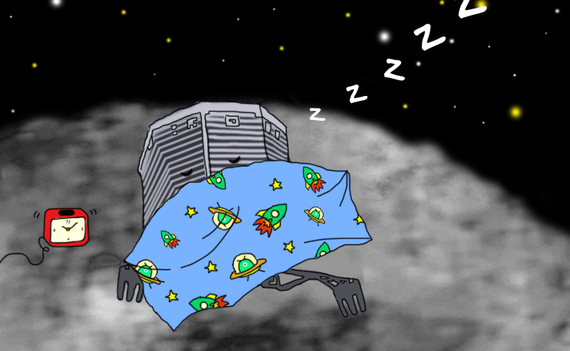Seven days; lots of science in the news. Here's our roundup of this week's most notable and quotable items:
Illustration credit: Sarah Peavey
NASA's Curiosity rover detected a burp of methane on Mars lasting for several months -- possibly stemming from a geologic process called serpentinization, or possibly the signature of microscopic Martian life. American military researchers are testing bullets that can change direction mid-flight. Some birds may be able to hear tornadoes and massive storms approaching days ahead of time.
Experiments at the Large Hadron Collider -- scheduled to switch on again in 2015 after two years of rest and retooling -- might explain why our universe has so much more matter than antimatter. The ESA's Venus Express probe is about to end its 8-and-a-half year mission with a fiery plunge into the planet's sulfuric atmosphere. Vegans eat an average of 6 million microbes a day.
Geologists are hoping a rock stuffed with 30,000 tiny diamonds will yield new insights about chemical processes below the Earth's surface. Humankind probably began using fire about 350,000 years ago, based on burnt flint tools found in an Israeli cave. There's no evidence that "paleo" diets actually reflect what Paleolithic humans ate. The Arctic is now warming twice as fast as the rest of the world.
Reindeer populations are on the decline. Copper handrails for hospital beds could greatly cut down the number of deadly infections passed to patients. Rosetta's Philae lander, now hibernating on Comet 67P, will reawaken next year, possibly as early as February, as its resting place is exposed to more sunlight. When egg and sperm meet, sparks literally fly.
_________________
"This Week In Science" is brought to you by the World Science Festival. For engaging science news, conversations, and media, check out the Festival website -- or sign up for our newsletter.
